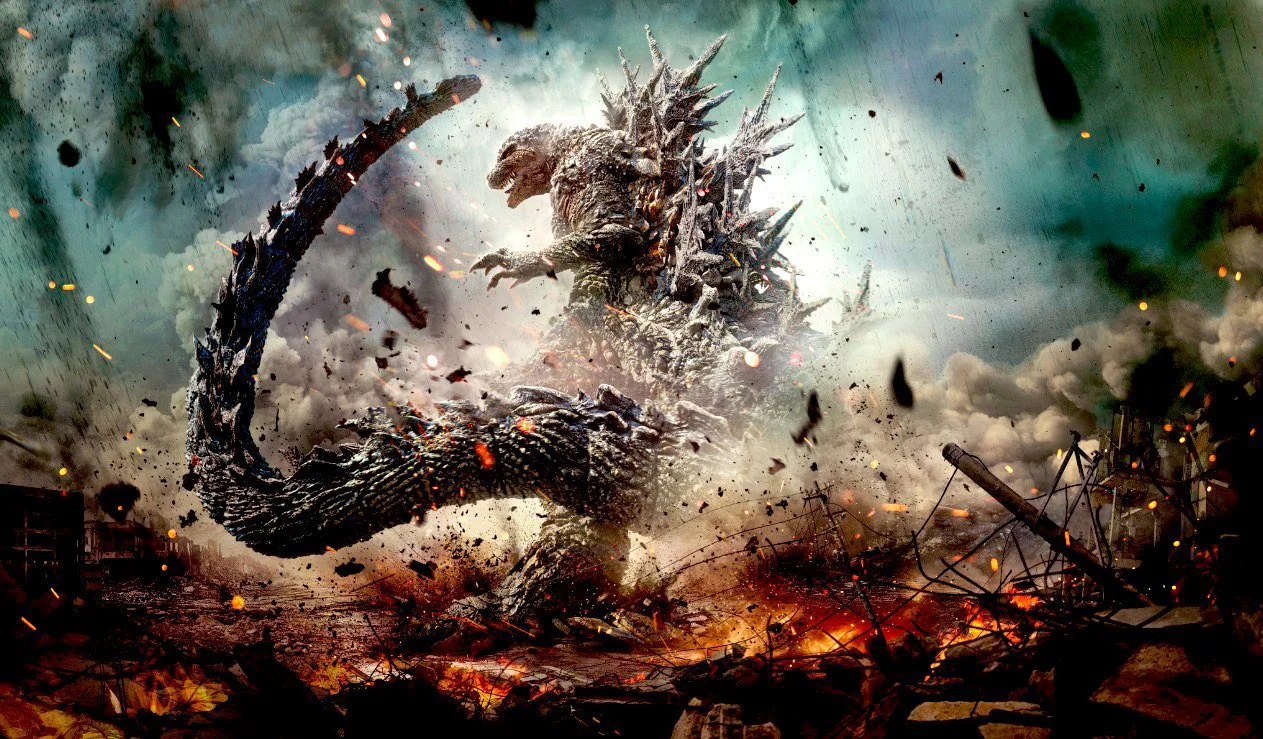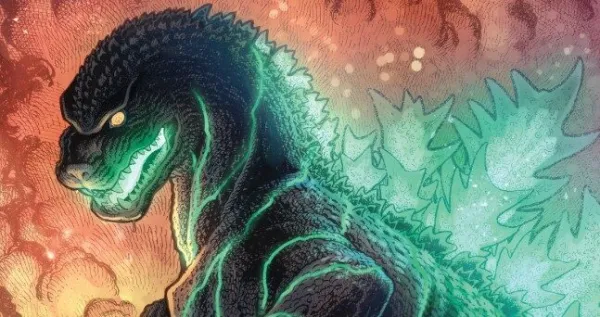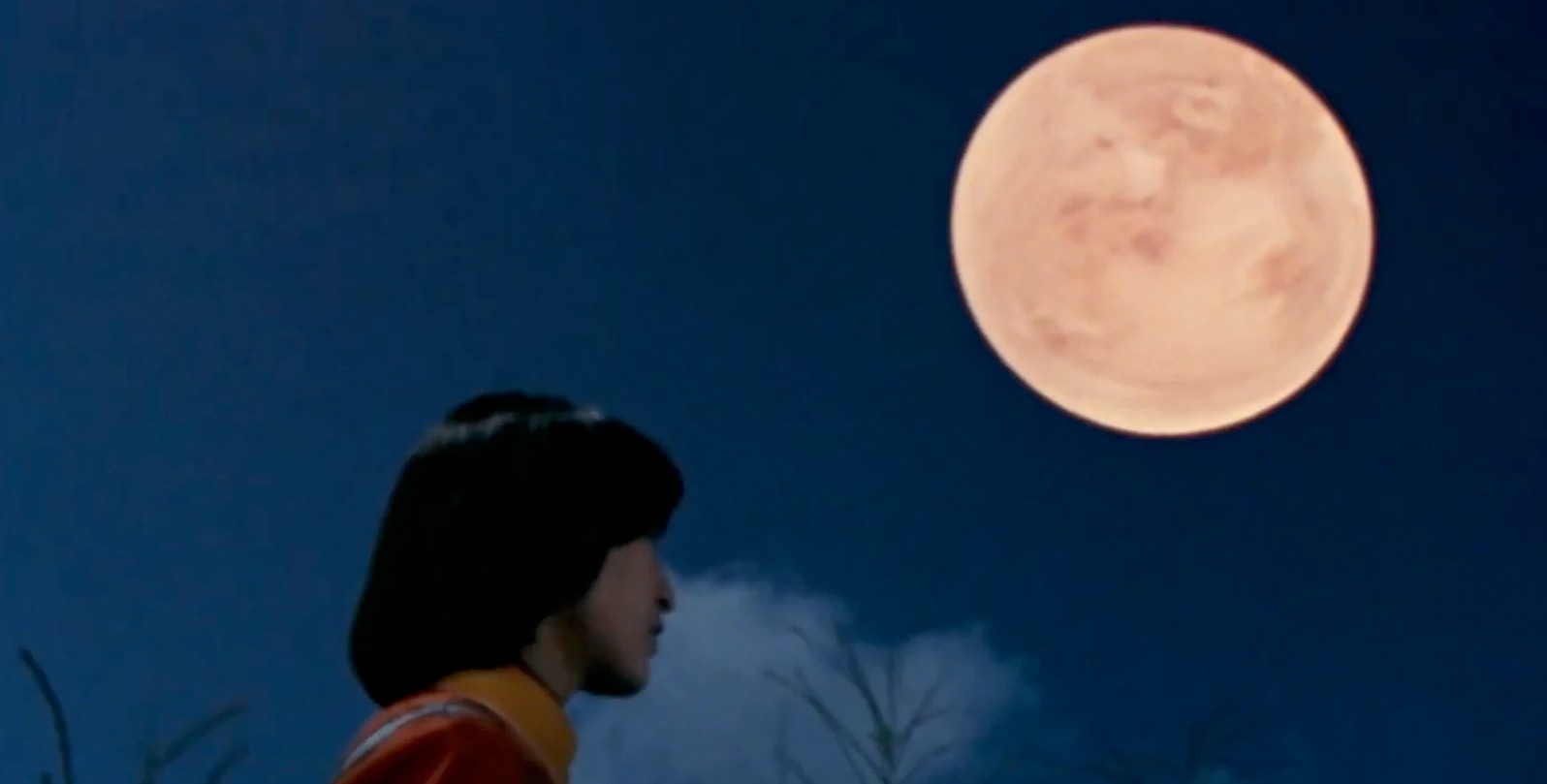It’s 1972 in Japan. Televisions were emerging in popularity, and the cinema was waning. Superheroes like Mazinger Z, Kamen Rider, and Ultraman were captivating the most populous television viewership— children! To combat this, Toho Studios, the home of Godzilla, had been airing child-centric programming blocks at the Champion Film Festival, starting in 1969. This would combine Godzilla with other popular events, such as the emerging anime genre, as well as re-edited episodes of Ultraman shows turned into feature films. The writing was on the wall, however, and Toho knew they needed a hit superhero movie to truly win over the child audience. It was time for the King of the Monsters to change or evolve.
Toho opted to design a contest, titled Children Monster University” (ちびっこ怪獣大学 Chibikko Kaijū Daigaku). To compete with superheroes popular with kids, Toho thought it best to have an actual child design the heroic robot that would feature in their next movie. Who better to catch the youth audience, than the youth themselves? And thus, the kids of Japan went to work, culminating in the contributors all appearing on the afternoon television block, Katsura Kokinji’s Afternoon Show, and the winner coming out on stage, represented by a fully constructed monster suit. How cool! The winner was a 6-year-old named Masaaki Sano, who created an all-white kaiju named Red Alone (レッド·アローン Reddo Arōn). This creature was a bizarre half robot, half yokai-esque monster with wings, coming straight out of his imagination. Toho had made some changes before revealing the winner, adding red and blue to his color scheme, which reportedly massively disappointed poor little Sano.

Red Alone was to debut in his own movie, but cold feet began emerging at Toho. Worries began that this new character was perhaps unable to carry his own film; his funky design, and freshness being potential red flags to the board. Thus, Red Alone was changed to a robot, and added to the first draft of what would ultimately become Godzilla Vs Megalon, simply titled Insect Monster Megalon vs. Godzilla: The Undersea Kingdom’s Annihilation Strategy. This draft, alongside Red Alone, were scrapped, and production returned to the drawing board. Special Effects Director Teroyushi Nakano was brought in the studio to re-design this Red Alone robot, changing his attributes to please the board with a more “pleasant” design. Contrary to the direction, however, Nakano has gone on record saying he didn’t like the “pleasant” direction, reportedly feeling like the market of Ultraman type superheroes was far too oversaturated. To combat this, Nakano designed Jet Jaguar, and tried to make his design as obnoxious and ugly as possible.

Megalon, too, went through several design changes. The entire plan from the beginning, introducing an insect kaiju for Godzilla to face off against, remained a constant in concept. The emerging popularity and interest in bugs with the youth being a significant factor in this decision. Notably, Toku bug villains were shown through other television programs and films, like the villainous Spider Man from Kamen Rider (1971). Both of these soon-to-be iconic creatures were designed by the same artist, usually incorrectly attributed to Akihiko Iguchi, who has denied any such involvement in this film. Akihiko, did however, contribute to the design of Mechagodzilla and Titanosaurus in the subsequent two films to follow.

Once the initial concept phase was completed, and a story by veteran Godzilla screenwriter Shinichi Sekizawa was drafted, principal production was rushed out of the gate to get this film to screens. In a baffling record amount of time, production was wrapped up in three weeks and sent to the editing room. It was later revealed that Jun Fukuda went on to complete the screenplay, adding most of it through improvisation. Reportedly, while on set, Jun Fukuda had Katsuhiko Sasaki (Goro) drink whiskey to emulate the effect of cold breath, because his normal breathing as an effect wasn’t working. This was done in the initial sequence with the famous dolphin floating toy, frequently joke fodder amongst kaiju fans.
The film itself sees a trio of characters, Roku, played by Hiroyuki Kawase (Godzilla Vs Hedorah), his brother, Goro, and his friend, Hiroshi, a race car driver. Goro (Katsuhiko Sasaki, who has a longstanding occurrence in Toho films after this and wound up dubbing the Japanese editions of the Hollywood Godzilla movies) and Hiroshi (Yutaka Hayashi) both look after the boy and live a normal life until it is interrupted by the underground dwelling Seatopians, who are angry at the surface world for their nuclear tests being loud, obnoxious, and destructive.

Goro is notable for being one of the few scientist/inventor characters in Toho’s film library that has zero working relationship with the government. He is not a military or research scientist; he just invents gigantic transforming robots that can tussle with a kaiju. His friend Hiroshi emulates the booming automobile/racing enthusiasts in 1970’s culture, not only emerging in Japan, but across the world. Again, Kamen Rider becomes the primary influence here, as the titular character in the 1971 series was a cool, 600+ IQ, relatable motorcycle enthusiast.
Regarding characterization, Director Jun Fukuda’s characters differ from Ishiro Honda’s in being much more wholesome and outgoing. Whilst Honda’s scientists are doomed, tragic figures that must grapple with the gravitas of their work, Jun Fukuda’s characters are always trying to better humanity and put their work out into the world. Even whilst kidnapped by the evil Seatopians, Goro has faith that they will be rescued by Hiroshi or his forever iconic creation, Jet Jaguar. The protagonists are essentially caricatures, easily digestible for the kids at home. “Optimistic Scientist”, “Carefree Cool Racecar Driver”, and “Kid Who Loves Godzilla”. It’s a really simple way of providing memorable characters. Kids want to have fun and learn some lessons along the way. The youth is not here for heavy-handed nuclear imagery. Jet Jaguar is a hero that likes to save the day and give thumbs up… simple as that!

Godzilla Vs Megalon has no themes, no exterior messages. It’s just a movie designed for market. The good guys are cool car drivers and inventors building things for fun. The bad guys are just mad at the upstairs neighbors for making too much noise, which just happens to be atomic tests to bring it back to Godzilla tropes. There are moments of pure fantastical, whimsical buffoonery. One of note being the amazingly executed sequence where Megalon destroys the local dam. It’s shot and produced like any other Godzilla film, and holds up quite well, but then the crew decides to have Megalon inadvertently save the day by striking the shipping crate our heroes are in, saving their lives and their fate of plunging down the dam below. It’s baffling, but really sets the tone of the movie quite well. Of course, most are familiar now with the iconic “tail slide” sequence, in which Godzilla defies all gravity and slides on his tail, slamming into Megalon whilst Jet Jaguar holds him. It makes no scientific, reasonable sense, but anyone can agree that it’s pure spectacle cinema.

Another substantial departure was the addition of Riichiro Manabe at the composer’s baton. Best known for his work on Godzilla Vs Hedorah, and Toho’s Bloodthirsty Trilogy, he differed from noted and established regular on the Godzilla series, Akira Ifukube, by having big band influences woven from within his soundtrack. Brass ques for big moments roared throughout the movie, and a nice cello version of Jet Jaguar’s theme played at the opening and closing credits. JJ’s theme was famously “Godzilla and Jet Jaguar: Punch! Punch! Punch!” (ゴジラとジェットジャガーでパンチ・パンチ・パンチ Gojira to Jetto Jagā de Panchi Panchi Panchi. Said theme song was a collaboration effort between several Toho people. Interestingly, not everyone that had collaborated on this song was primarily a musician. Punch! Punch! Punch! was composed by Riichiro Manabe, with lyrics by previously noted screenwriter Shinichi Sekizawa, and performed by legendary Toku theme song singer, Masato Shimon. All three together contributed to what may be the most memorable aspect of Godzilla Vs. Megalon, having been frequently referenced in fan culture, and even parodied on Mystery Science Theater 3000.

The film was released in March 1973, after a six-month production schedule, encompassing conceptual design to editing room. This turnaround is not only a record for the Godzilla series, but perhaps a record for film history too. It saw moderate success at the Japanese box office, but not nearly enough to keep the series going. Work was put quickly into production on the film that would reignite the Showa era, for at least two more films, Godzilla Vs Mechagodzilla, to celebrate the 20th anniversary of the Godzilla series. Mechagodzilla would prove to be an enormous success, and reinvigorate the popularity of Godzilla for a few more years in Japan, until he’d rest again for another decade until The Return of Godzilla, covered by Kaiju United contributor Corey.
Overseas on the United States side, however, Godzilla Vs Megalon was proving to be a hit. The film Godzilla Vs. Megalon was earning $383,744 in its first three days in Texas and Louisiana alone, according to a report by Edward Edelson. This release was put out by Cinema Shares International Distribution Corporation (Cinema Shares for short), who had also previously acquired distribution for Godzilla Vs Mechagodzilla, and Godzilla Vs Gigan, it was released into theaters in 1976 to capitalize on the success of Dino de Laurentis’ King Kong remake. This capitalization was further cemented by the iconic poster of Godzilla and Megalon doing battle on the World Trade Center, something that very clearly does not occur within the film itself.

Accompanying this release was a completely original Godzilla Vs Megalon comic book, created by United States pencillers and colorists. Strikingly, the names in this comic book are all incorrect. Jet Jaguar becomes ROBOMAN, and Gigan becomes BORODAN! It’s an interesting piece of Godzilla history, and one of the first true western depictions of the King of the Monsters, though. Cinema Shares would put out these three Godzilla films, and then 1985’s Space Warriors 2000 before going defunct in 1985.

Cinema Shares’ release of Godzilla Vs Megalon was typically paired with another older monster movie, or sometimes double billed with one of the two previously stated Godzilla films that CS owned. The film, however flawed and negatively received it may be, contributed to the growing emergence of Godzilla fans in the U.S. at that time. It may have also contributed to the perception of kaiju eiga films being “silly” or “hokey” to Western Fans, but it was still beloved and massively successful at the box office.
Fans were into this film for the pure entertainment spectacle, and it showed. US Fans wanted monster action like Megalon, and that has become evident even 50 years after its original Japanese release, showcased by fans’ feedback to the Hollywood incarnation of the MonsterVerse, spearheaded by Legendary Pictures.

Godzilla Vs Megalon is a messy film, rushed into production to capitalize on the growing successes of superhero films. It sounds eerily familiar to a few superhero stories of today, rival studios often attempting to capitalize on the success of the Marvel Cinematic Universe. Despite all of that, the fan community has grown to love and appreciate the ridiculous nature of this film. Alongside Jun Fukuda’s other Godzilla flick, Ebirah, Horror of the Deep, it is one of just two films to be both on Mystery Science Theater 3000, and The Criterion Collection, which speaks volumes to the innate love that fans have for this film. Jet Jaguar would remain dormant for many years, getting cameo roles in obscure shows like Godzilla Island, with fans clamoring for his eventual return. He made popular appearances in the Pipeworks Trilogy of Godzilla 3D fighting games; however, they were just one-off appearances, and Jet Jaguar would not appear in the adjacent film series releasing concurrently with those games, the Millennium Series.
Jet Jaguar’s revival in popularity would spike with the IDW Comics’ run, Godzilla: Rulers of Earth. Our shiny silver superhero single handedly defeating looming brute monster Orga in combat. JJ decided the best way to defeat this alien attacker was to become lunch. and then grow to gigantic size, effectively exploding the colossal creature from within! Delivering his trademark thumbs up and frozen smile, JJ would go on to face Toho regulars like Destoroyah, and assist in the final battle to save the world. When the world is in peril, Jet Jaguar is here to save the day.
This would all culminate in the 2021 anime, Godzilla: Singular Point, in which Jet Jaguar returns as a focal character! He’s a robot built by a corporation to combat the incoming threat of kaiju, and ultimately, Godzilla himself. The anime focuses on Jet Jaguar more than Godzilla, with Godzilla appearing in Episode 10, providing ample time for our shining, smiling hero to yet again, win the hearts and minds of the people.

May Jet Jaguar come back again? Will he bring Megalon, who’s also massively overdue for a comeback? It is almost as guaranteed as another MonsterVerse film happening in 2024. The past two years has seen Toho celebrate the 50th anniversaries of its 1970’s kaiju. Hedorah was celebrated with new figures, promotional posters, and a brand-new short film accompanying the fanfare. Gigan’s celebration doubled the hype, with Millennium-era creature designer Shinichi Wakasa building a replica suit of the original 1972 Gigan design, to be used in his primary short film. All of these efforts were showcased each November 3 for the Godzilla Day celebrations. Gigan’s short films were revealed Nov 3, 2022, to much excitement and promotion. After this stream ended, to the shock of the live chat, Toho revealed separate logos for MEGALON’S 50TH, and JET JAGUAR’S 50th. Two separate promotional campaigns for our Godzilla Vs Megalon favorites!

Hopefully the love continues, and this year we see our two beloved, zany characters from this goofy 1970’s outing of Godzilla returns yet again.
Happy 50th, Godzilla vs Megalon!

Sources:
–Wikizilla (Godzilla Vs Megalon, Jet Jaguar, Megalon, Riichiro Manabe)
-Wikipedia Japan (Godzilla Vs Megalon)
– Godzilla Vs Megalon Tokyo Shock DVD / Blu-ray audio commentary by Steve Ryfle and Stuart Galbraith IV
–All Toho Monsters Pictorial Book (4th ed.). Yosensha. 4 September 2016. pp. 176, 179, 181–182, 201, 207. ISBN 978-4-8003-0362-2.
–Toho Special Effects Movie Complete Works. villagebooks. 28 September 2012. p. 159. ISBN 4-864-91013-8.
Godzilla Toho Champion Festival Perfection. ASCII MEDIA WORKS. 29 November 2014. pp. 89, 103, 109, 111. ISBN 978-4-04-866999-3.
– 井口昭彦さんトークライブ レポート! – Cast
-Edelson, Edward (1980). Great animals of the movies. Doubleday. p. 85. ISBN 9780385147286.
Adjacent Content:
-Godzilla Vs Gigan (1972)
-Zone Fighter (1973)
-Kamen Rider (1971)
-Ultraman (1966)
-Ultraman Ace (1973)
-Mazinger Z (1972-1974)





